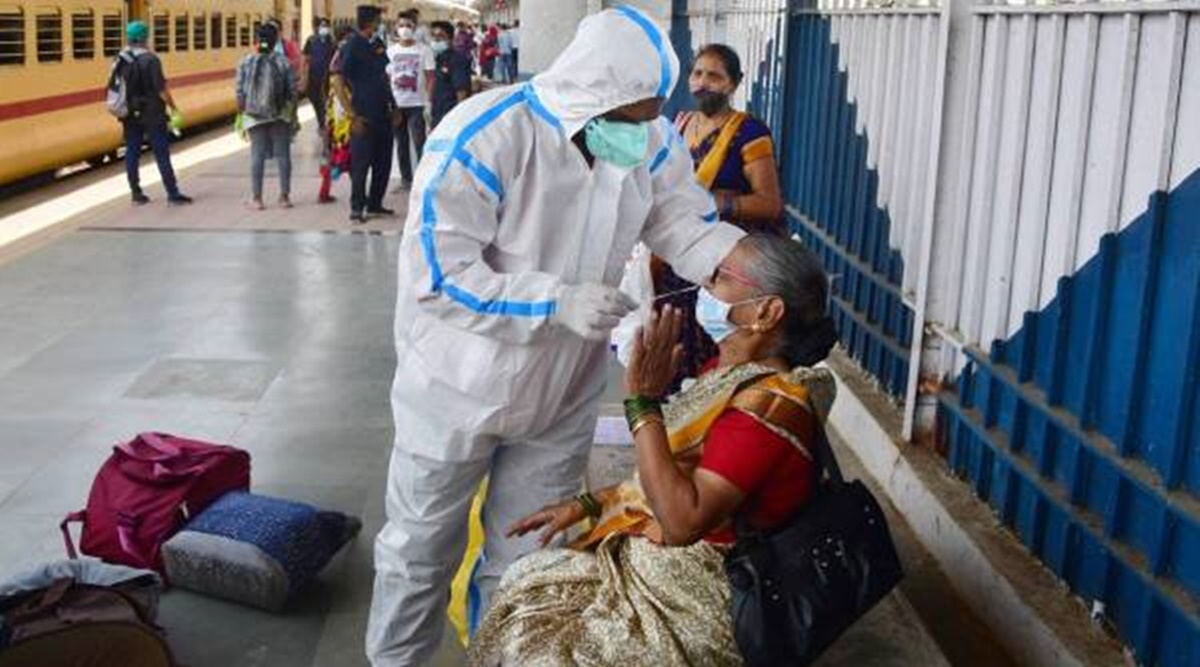
As the Omicron variant of the novel coronavirus makes an entry in Gujarat, a study by researchers from the Indian Council of Medical Research (ICMR) and other organisations, conducted in May and June during the second wave of Covid-19 in two blocks of Ahmedabad district, found that asymptomatic and pre-symptomatic cases with high viral load pose a “greater threat” compared to symptomatic cases.
One study subject was found to have infected 14 others while being unaware of his Covid-19 status as the subject was asymptomatic, according to the study, published in the Japanese Journal of Infectious Diseases reasons.
“It appears like asymptomatic cases may spread more number of secondary cases compared to symptomatic cases during their pre-symptomatic period, particularly cases with high viral load, probably because of their ignorance of their status,” the study notes.
Drawing a correlation on transmission dynamics within a family and its dependency on viral load, the study found that index cases (defined in the study as the first infected case within a family) with higher viral load generated significantly higher secondary cases compared to the secondary cases generated by index cases with lower viral load.
While socio-economic status, family size, lack of hygienic practices, population density and population mobility may also play a role in transmission of the virus, the study with its small sample size of 157 cases from 114 families across the two blocks of Ahmedabad rural (with 114 as index cases and the remaining 43 being secondary cases — those infected by the index cases) did not find any such correlation.
Another reason for the absence of an association with secondary factors, as the study observes, “could be due to the fact that cases with high viral load are powerful transmitters undermining other factors such as socio-economic status, and/or family size, etc”.
In many high as well as low socio-economic families with or without overcrowding, intrafamilial transmission of secondary cases occurred when viral load of index case was high but the same was not seen with in index cases with low viral load. The authors have thus suggested in their study that “home quarantine is not suggested” and instead institutional quarantine be considered for cases with high viral load, so as to avoid intrafamilial spread.
Overall, nearly 38 per cent of the 157 cases studied were asymptomatic and thus capable of transmitting the virus unknowingly.
The study was authored by Emeli Paul and Kamalesh Sarkar from ICMR-National Institute of Occupational Hazard (NIOH) in Ahmedabad, Aditi Sengupta from CK Birla Hospital in Kolkata, Bidisa Sarkar from Kalinga Institute of Medical Sciences in Bhubaneshwar and Dharmendra Singh from ICMR-NIJL (National Jalma Institute of Leprosy) in Agra.
From the 30 index cases with high viral load, the virus was transmitted to 100 others, indicating that a high viral load patient infected more than three others on an average. It was also found that one asymptomatic subject with high viral load managed to infect 14 others. Unaware of his status, and not following the necessary precautions seriously, the patient went to a family get-together where he infected 11 and to office where he infected three of his colleagues.
On the other hand, 24 index cases with moderate viral load transmitted the infection to 36 others and 60 other index cases with low viral load only transmitted the viral infection to 21 others.
"load" - Google News
December 05, 2021 at 08:08PM
https://ift.tt/3ptXCTZ
Asymptomatic Covid cases with high viral load posed a greater threat: Study - The Indian Express
"load" - Google News
https://ift.tt/2SURvcJ
https://ift.tt/3bWWEYd
Bagikan Berita Ini














0 Response to "Asymptomatic Covid cases with high viral load posed a greater threat: Study - The Indian Express"
Post a Comment